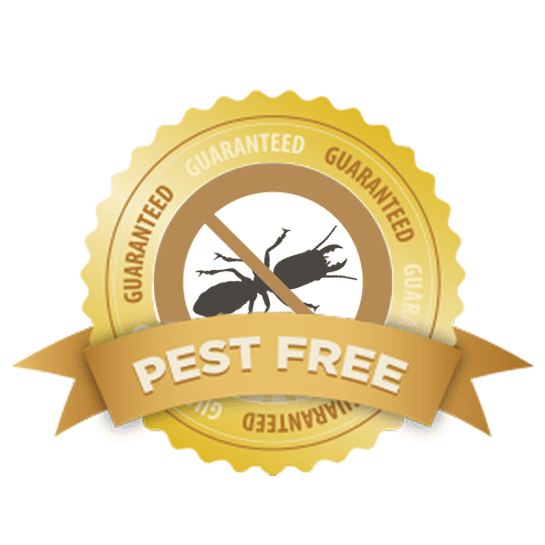A1 Bed Bug Exterminator Charlotte - Specialized Bed Bug Elimination
A1 Bed Bug Exterminator Charlotte - Specialized Bed Bug Elimination
Blog Article
Bed Insect Therapy Break Down: Contrasting Chemical Vs. Non-Chemical Solutions
In the realm of bug control, particularly when taking care of the consistent concern of bed bugs, the selection in between chemical and non-chemical treatment remedies can be a pivotal one. Both techniques supply distinct benefits and downsides, influencing factors such as performance, safety considerations, and general price. By analyzing the nuanced information of each approach, a clearer understanding of which path to go after in resolving a bed bug invasion can be obtained.
Performance of Chemical Therapies
Chemical treatments for bed bug problems have actually been extensively acknowledged for their fast and potent efficiency in removing these bugs. When thinking about the effectiveness of chemical treatments, it is crucial to recognize that they can provide a fast and detailed option to a bed insect problem.
Moreover, chemical therapies have the advantage of offering recurring impacts, implying that they can continue to remove bed insects also after the first application. This residual activity is especially useful in combating any possible re-infestations. Furthermore, the rapid activity of chemical treatments can bring alleviation to individuals encountering serious bed bug problems, enabling them to regain control of their space rapidly.
Safety Interest In Chemical Solutions
One critical aspect that requires careful consideration when utilizing chemical solutions for bed bug treatment is ensuring the safety of occupants and the environment. Direct exposure to particular chemicals utilized in bed pest therapies can lead to respiratory problems, skin inflammation, or other adverse reactions, specifically in individuals with pre-existing conditions or sensitivities.
Furthermore, the environmental influence of chemical services is another significant factor to consider. Some chemicals utilized in bed bug treatments might be dangerous to valuable pests, wildlife, and communities if they leach right into the dirt or water systems. It is necessary to make use of chemical therapies sensibly, following safety and security standards, and thinking about less poisonous options to reduce these risks and make certain the safe and reliable monitoring of bed insect infestations.
Advantages of Non-Chemical Methods
Thinking about the potential security issues and ecological influence related to chemical services for bed insect therapy, exploring non-chemical approaches provides a promising option with several unique benefits. Non-chemical techniques offer a much safer option for homes, specifically those with individuals, pets, or children delicate to severe chemicals. These strategies eliminate the dangers of direct exposure to toxic substances, decreasing the possibility for unfavorable health and wellness results. Additionally, non-chemical therapies are eco-friendly, as they do not contribute to air or water air pollution, making them a sustainable choice for bug control.
Furthermore, non-chemical services can be effective in targeting bed pests, including hard-to-reach areas where chemical treatments may not pass through - A1 exterminators charlotte nc. Approaches such as warm treatment, vacuuming, vapor cleansing, and mattress coverings supply extensive removal without the usage of dangerous chemicals.
Limitations of Non-Chemical Treatments

In addition, non-chemical treatments usually require several applications to attain effective eradication. This can be lengthy and might not constantly assure complete removal of all bed pests and their eggs, specifically in concealed or hard-to-reach places.
Additionally, the success of non-chemical treatments heavily depends on appropriate execution and thoroughness, which can be testing for people without professional competence. Poor application of non-chemical approaches might cause insufficient obliteration, leading to persistent infestations and the need for additional therapies.
As a result, while non-chemical therapies have their benefits, it is important to recognize these constraints and consider them when establishing the most reliable strategy for taking care of bed pest problems.
Expense Contrast: Chemical Vs. Non-Chemical Options
Provided the limitations associated with non-chemical therapies, an essential facet to review in the context of bed pest administration is the expense comparison in between chemical and non-chemical alternatives. Chemical therapies usually involve the application of insecticides by specialists, which can vary from $250 to $900 per space, depending on the extent of the problem and the size of the area to be dealt with. On the other hand, non-chemical treatments like warmth therapy or heavy steam can be a lot more expensive, with costs varying from $1,000 to $6,000 for an entire home. While the initial price of chemical treatments might appear lower, numerous treatments may be called for to completely eradicate the problem, potentially boosting the general expense. On the various other hand, non-chemical choices might offer an extra sustainable and environmentally friendly solution, although they can be cost-prohibitive for some people. Inevitably, when taking into consideration the price of bed bug treatment options, it is vital to evaluate insect control companies the ahead of time expenditures against the effectiveness and long-lasting sustainability of the chosen technique.
Verdict

Considering the possible safety and security problems and environmental influence connected with chemical services for bed bug therapy, discovering non-chemical methods offers an appealing choice with numerous unique advantages.Provided the constraints linked with non-chemical therapies, an essential facet to assess in the context of this content bed bug administration is the cost comparison in between chemical and non-chemical options. In contrast, non-chemical therapies like warmth therapy or vapor can be much more expensive, with expenses varying from $1,000 to $6,000 for an entire home. While the first cost of chemical therapies may appear reduced, multiple therapies may be called for to completely eliminate the invasion, possibly enhancing the general cost.In conclusion, when contrasting chemical and non-chemical bed pest therapy options, it is important to take into consideration effectiveness, safety and security, benefits, restrictions, and price.
Report this page